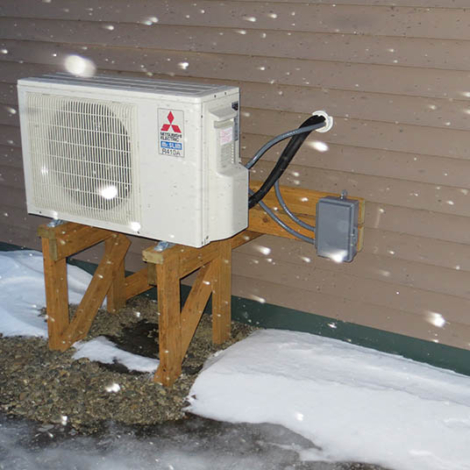Air-source heat pumps are touted as a tool for reducing household energy use and greenhouse gas emissions. A new analysis suggests that the technology could deliver on that promise for most U.S. homes only if the price comes down.
The study, by researchers at the US National Renewable Energy Laboratory (NREL) and published in Joule, used computer simulations of 550,000 representative households across the United States. The model estimated the performance and costs of heat pumps under a range of conditions, examining regional climates, fuel types, household insulation and whether homes already had air conditioning.
The results suggest that 62-95 percent of U.S. households would spend less on energy if they switched to a heat pump, depending on the system’s efficiency. Weatherization measures such as upgrading insulation increased that share to as much as 97 percent. Savings were particularly strong for the 49 million households that use electricity, fuel oil, or propane for heat and also rely on air conditioning. In that group, 92-100 percent of homes would benefit, typically saving $300 to $650 annually.
Commenting on their findings in a statement, the researchers say that residents of colder climates could save the most, and homeowners can save thousands of dollars on average by choosing a smaller heat pump if they have already made energy efficiency improvements.
Energy reductions may be more striking. On average, households with heat pumps would cut their site energy use by 31-47 percent compared with existing systems, and by up to 52 percent when combined with insulation upgrades. Nationally, that would translate into a 36-64 percent decline in greenhouse gas emissions from the residential sector. Emissions savings are greatest when heat pumps replace furnaces or boilers that burn fossil fuels.
But the technology is not yet an easy financial choice for all families. Installation costs remain high, particularly in areas dominated by cheap natural gas, which undercuts the cost advantage of electricity. The study also notes that many contractors lack experience with heat pumps and may charge more to account for the added complexity of sizing and installing the units. In households without existing air conditioning, adding the cooling function can boost comfort but adds further expense.
The study shows that millions of people would benefit from installing heat pumps, says Eric Wilson, a senior research engineer in the Buildings Technologies and Science Center at NREL and lead author.
“But what this paper shows is that there are still millions more households for whom the technology is still pretty expensive, and we need work to bring down the cost of installing heat pumps,” Mr. Wilson says.
The research underscores a central tension in the transition to cleaner home heating: the technology is ready, but the economics are not. Reducing upfront costs and expanding the trained workforce could determine how quickly heat pumps move from promising climate solution to mainstream fixture.

